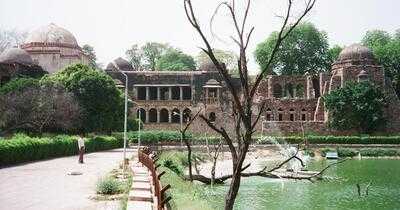If you’re at all interested in the history of Delhi, chances are you have heard of the “seven cities of Delhi”. Of how some of the most ambitious rulers sought to assert their claim to the throne by building massive citadels and cities of their own. From Lal Kot to Tughlaqabad, Firozabad to Shahjahanabad and New Delhi, these “cities” (not all historians agree on their number – there were very likely more than seven Delhis) have been discussed and described time and again. Their establishment, their layout, their evolution, their socio-cultural and economic make-up have been studied by numerous scholars.
The concept of a cityWhat of Delhi’s villages, though? The villages of Delhi rarely find anything beyond a fleeting mention in the city’s chronicles, whether factual or fictitious. They are tucked away, hidden behind the towering facades of palaces and skyscrapers, grand monuments and sweeping flyovers. Yet – as Ekta Chauhan writes in her book Sheher Mein Gaon: Culture, Conflict and Change in the Urban Villages of Delhi – perhaps to understand Delhi’s villages, we need to first re-examine our concept of a city. Chauhan quotes historian Sohail Hashmi as saying that “there are no cities without migration”. Chauhan goes on to add: “He elaborated that...
Read more
You may also like

Gabriel Bortoleto in floods of tears as footage captures agony after Brazilian GP crash

'Exposing corrupt journalists': Donald Trump reacts to BBC boss Tim Davie stepping down over Jan 6 speech row

Bullseye fans complain minutes into ITV reboot as they fume 'too much'

Lewis Hamilton in sincere Ferrari apology at Brazilian GP as Brit 'living a nightmare'

Say what you want about Meghan Markle but there is one thing she can't be criticised for







